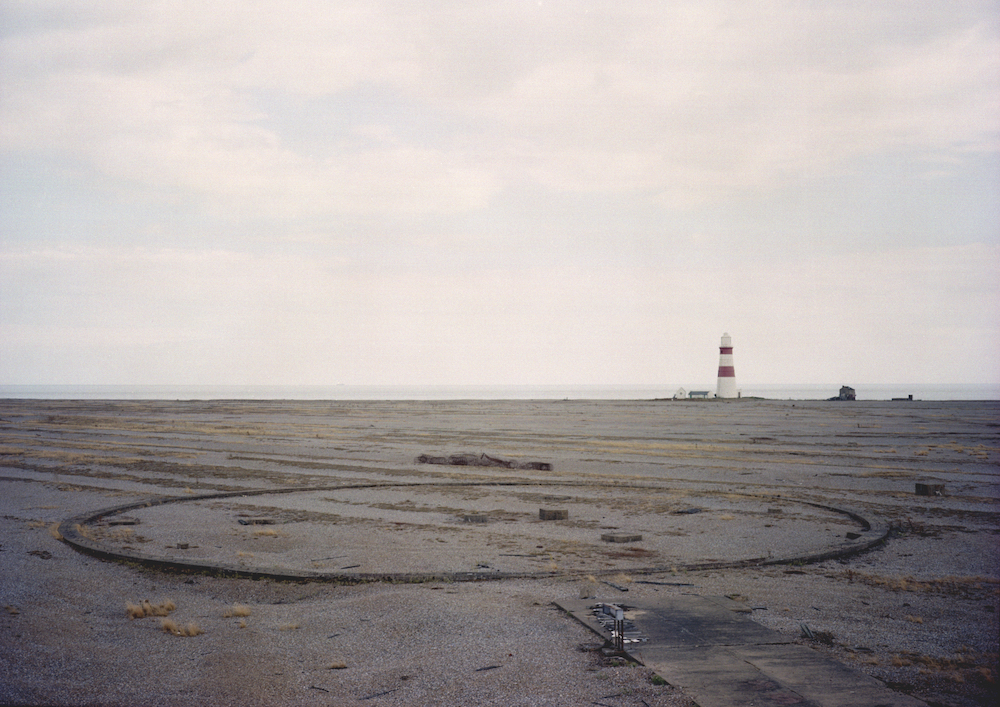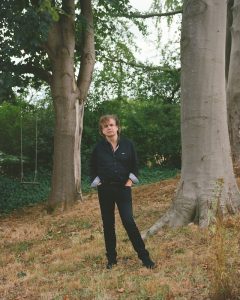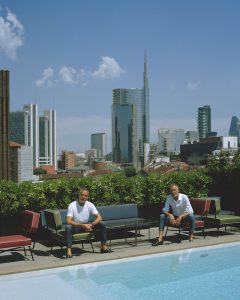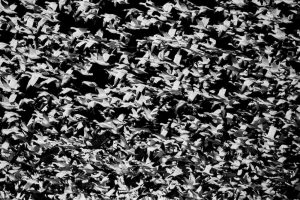A flat and seemingly featureless strip of isolated Suffolk coastline conceals the secret of British military technology from Radar to the Nuclear Age

Separated from the Suffolk mainland by the River Ore, Orford Ness is a slip of shingle spit – the most vegetated of its kind in Europe, as precious and fragile as coral, and a peculiar place to find relics of the Cold War, lying beaten and rattled by the wind.
The crossing to the spit, while brief, is as all crossings – filled with a sense of transition; peaceful and somehow tense, the river, silver and dark, parts thickly with the bow of the boat. Time exchanges land for land; Andrew our ferryman becomes Ranger, our vehicle becomes a Land Rover: the engine shakes into shape and we roll on.
Now a nature reserve of international significance, the island was once home to a testing ground for mechanisms of the post-war arms race. At the opposing end of the peninsular is the mysterious hulking form of Cobra Mist, an Anglo-American experimental over-the-horizon radar station. Now in private hands, it is said to house a downed UFO. We set out for the ‘pagodas’ – the strange and iconic underground bunkers, laboratories and testing stations used for research into hydrogen and atomic weaponry.
A confusing and lost community, the spit is dotted with these abandoned structures. Seen on the horizon, they grow into great brutalist cadavers rent from function and dense in a forgotten cabal. While no fissile material was ever used on site, the buildings were designed as compression tanks – in the event of an accident concerning high explosives, the roofs would collapse, enclosing the building as with a great tomb.
One could be tempted to describe these buildings as temples to science – where man overcame their gods, and it’s a persuasive notion underneath the heavy skies of East Anglia. Despite this heightening of the spirit here, the humble concrete lines of the forsaken structures, interrupted by bramble and foliage, create a sense of a Methodist church abandoned by its parishioners – old, innocent and rural – and given back to the landscape.

Built in 1933, the ballistics building was the centre of the experimental bombing range on Orford Ness. Here, state-of-the-art equipment was developed to track the flightpath of projectiles to improve aerodynamics and anticipate the trajectories of atomic weapons. The facilities steadily improved over the years, most notably from the 1950s for the development of the atomic bomb.
The building’s roof provides a panorama of the peninsula and was used as an observation post – naval binoculars can still be found in situ. From here the remnants can be seen of the airfield and flood protection walls built by German prisoners of war held on Orford Ness during World War I.

Laboratory 2, built between 1955 and 1958, was originally used to test the casing for Blue Danube, the first operational British nuclear weapon. Constructed with a concrete roof and blast doors, the building was used to subject the weapons to extreme temperatures, vibrations and shock: In 1959, the environmental test programme was expanded to simulate the conditions encountered during transportation, storage and use.
The late 1950s marked a high watermark for testing prototype weapons on Orford Ness, including warheads for the Blue Steel standoff missile; an intermediate range ballistic missile, Blue Streak; the Blue Water surface-to-surface missile; freefall bomb Yellow Sun and the naval Seaslug missile.

Further to the west are the most distinctive structures on the peninsular – the two vibration test buildings, now commonly referred to as the ‘pagodas’, constructed in 1960. The specifications for construction included the ability to withstand the accidental detonation of 180kg of high explosives: In the event of a conventional explosion, the blast would be diverted up through the open spaces under the roof; anything stronger would cause the supporting pillars to fail, and the concrete roof covered with gravel would collapse, containing the explosion.

The most significant experiments conducted at Orford Ness took place under the blanket of the Ionospheric Research Station (IRS), set up in 1935 by Robert Watson-Watt, a pioneer of radio direction finding and radar technology. In a meeting of the committee for the Scientific Study of Air Defence, it had been suggested to Watson-Watt that a ‘death ray’ could be used to stop enemy aircraft. Watson-Watt rejected this as impractical with the technology available at the time, but suggested the potential to use radio waves as a detection system.
The IRS was a cover for the development of the radio-detection system that briefly became ‘radio direction finding’, or RDF, before it was established under the American acronym RADAR (radio detection and ranging). The first-ever purpose-built radar masts were installed at Orford Ness in 1935; built by Harland and Wolff of Belfast, they were 76 metres high. Without the work undertaken at Orford Ness, it is very possible that the Battle of Britain in 1940 would have been lost by the UK and, on the Luftwaffe gaining air superiority, with it, World War II.

The Orfordness Rotating Wireless Beacon was an early radio navigation system introduced in July 1929. Built so the angle to the station could be measured from any aircraft or ship with a conventional radio receiver, it was accurate to about a degree. This enigmatic building, designed to look like the lower section of a Dutch windmill, and painted black, remains a distinctive landmark on the peninsular.
With the introduction of the modern WE177 bomb and the Polaris submarine-based nuclear weapon systems, the peninsular was used less and less, until, in April 1969, the decision was announced to close it completely. Many of Orford Ness’s functions moved to Aldermaston – where the Atomic Weapons Research Establishment (AWRE) is still based – and the buildings were abandoned. The last test took place on June 1971 and the closure completed in October of that year, with the use of the peninsular passing from the AWRE to an ordnance disposal unit of the RAF. It was acquired by the National Trust, from the Ministry of Defence, in 1993.
Photography Tobias Harvey

This article is taken from issue 23. To buy the issue or subscribe, click here.




